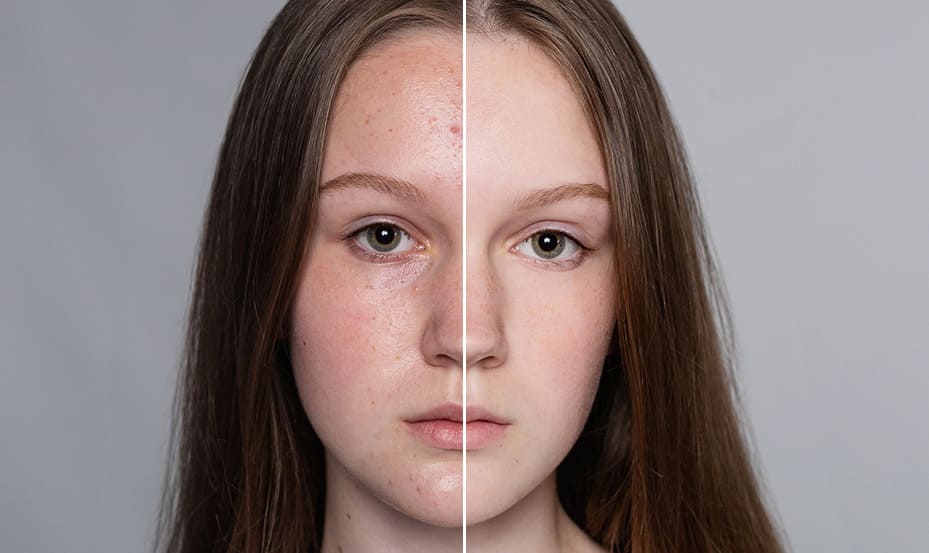Types of Chemical Peels:
Superficial Peels:
These use acids such as glycolic or salicylic acid, which primarily work on the outermost layer of the skin, the epidermis. They are ideal for treating mild skin issues such as enlarged pores, mild acne, dull skin, and superficial pigmentation. They are less invasive and usually require little to no downtime.Medium Peels:
They mainly use trichloroacetic acid (TCA) to reach the upper dermis, offering more intense results. They are excellent for addressing more pronounced pigmentation issues, fine wrinkles, and uneven skin texture. These peels may require a few days of recovery, during which the skin may peel and feel more sensitive.Deep Peels:
These are the most intense and use ingredients such as phenol to penetrate deep into the dermis. These treatments are effective for addressing deep wrinkles, significant sun damage, and scars. Due to their intensity, deep peels require strict medical supervision and a longer recovery period.Determining Skin Type and Needs:
Recommendations by Skin Type:
- Oily and Acne-Prone Skin: Peels with salicylic acid are ideal, as this acid is lipid-soluble and can penetrate deeply into clogged pores.
- Dry Skin: Peels with glycolic acid are beneficial, as they help attract moisture to the skin in addition to their exfoliating effect.
- Sensitive Skin: Peels with mandelic acid are a gentler option that can improve tone and texture without causing significant irritation.
Post-Peeling Care:
After a chemical peel, it is important to properly care for the skin. This includes using rich moisturizers to help restore the skin barrier, applying broad-spectrum sunscreen to protect the newly sensitive skin, and avoiding direct sun exposure. Additionally, it is advisable to follow all instructions from your dermatologist and schedule follow-up visits to monitor progress.
Chemical peels can significantly transform the appearance of your skin, but it is vital to choose the right type and follow the recommended post-treatment care. Always consult with a qualified dermatologist to ensure that the peel you choose is the most suitable for your specific needs.
Are you ready to unlock your skin’s potential with a chemical peel? Contact us today to schedule your personalized consultation and take the first step towards radiant, rejuvenated skin.

























